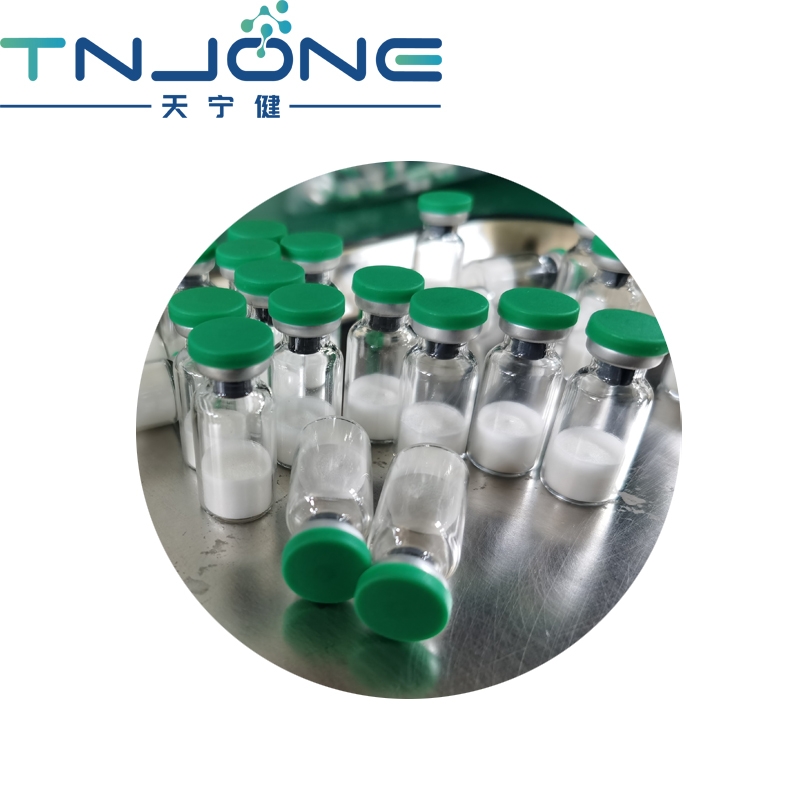-
The Synthetic Routes of 6-AMino-5-azacytidine
Time of Update: 2023-05-12
I. Synthesis of 6-amino-5-azacytidine via the classical method The classical method of synthesizing 6-amino-5-azacytidine involves several steps, including the synthesis of ephedrine, a step-by-step condensation with sodium hydroxide, and finally, the reduction of the resulting intermediate with lithium aluminum hydride (LiAlH4).
-
The Applications of Tegafur
Time of Update: 2023-05-12
It has been shown to be highly effective at preventing the oxidation of fats and oils, which can help to improve the shelf life and stability of a variety of products.
-
The Production Process of Cisplatin
Time of Update: 2023-05-12
The production process of cisplatin involves several steps, including the synthesis of the platinum complex, purification, and formulation.
The production process of cisplatin involves several steps, including the synthesis of the platinum complex, purification, and formulation.
-
The Synthetic Routes of Tegafur
Time of Update: 2023-05-12
This reaction is known as the Diketene-Type Reaction, and it involves the formation of a xylene-DMF complex, which is then hydrolyzed to form Tegafur.
This reaction is known as the Diketene-Type Reaction, and it involves the formation of a xylene-DMF complex, which is then hydrolyzed to form Tegafur.
-
The Safety of 1,4-BIS[3,4-DIHYDRO-2(1H)-QUINOLINON-7-OXY]BUTANE
Time of Update: 2023-05-12
In conclusion, 1,4-BIS[3,4-DIHYDRO-2(1H)-QUINOLINON-7-OXY]BUTANE, or BDHQ, is a safe and stable chemical compound that is widely used in the chemical industry.
In conclusion, 1,4-BIS[3,4-DIHYDRO-2(1H)-QUINOLINON-7-OXY]BUTANE, or BDHQ, is a safe and stable chemical compound that is widely used in the chemical industry.
-
The Production Process of Fulvestrant
Time of Update: 2023-05-12
The next step in the production of fulvestrant is the cyclization reaction, where the 7-dehydroxyprogesterone molecule is converted into a cyclic compound called 1,2,6,7,8,9-hexahydro-10H-pyrano[2,3-d]pyrimidin-7-one.
The next step in the production of fulvestrant is the cyclization reaction, where the 7-dehydroxyprogesterone molecule is converted into a cyclic compound called 1,2,6,7,8,9-hexahydro-10H-pyrano[2,3-d]pyrimidin-7-one.
-
The Applications of Gefitinib
Time of Update: 2023-05-12
Another application of gefitinib in the pharmaceutical industry is in the development of new drugs.
Another application of gefitinib in the pharmaceutical industry is in the development of new drugs.
Another application of gefitinib in the pharmaceutical industry is in the development of new drugs.
-
The Upstream and Downstream products of Erlotinib hydrochloride
Time of Update: 2023-05-12
The production of erlotinib hydrochloride involves several upstream and downstream products, including raw materials and intermediates as well as Erlotinib hydrochloride is an FDA-approved drug used to treat non-small cell lung cancer and pancreatic cancer.
-
The Applications of Fulvestrant
Time of Update: 2023-05-12
Fulvestrant is a synthetic steroid hormone that is commonly used in the chemical industry for a variety of applications.
Fulvestrant is a synthetic steroid hormone that is commonly used in the chemical industry for a variety of applications.
-
The Instruction of Erlotinib hydrochloride
Time of Update: 2023-05-12
Erlotinib hydrochloride is a tyrosine kinase inhibitor that belongs to a class of drugs called epidermal growth factor receptor (EGFR) tyrosine kinase inhibitors.
Erlotinib hydrochloride is a tyrosine kinase inhibitor that belongs to a class of drugs called epidermal growth factor receptor (EGFR) tyrosine kinase inhibitors.
-
The Applications of 5-(Hydroxymethyl)-alpha,alpha,alpha',alpha'-tetramethyl-1,3-benzenediacetonitrile
Time of Update: 2023-05-12
Tamoxifen-based catalysts have been shown to be highly efficient and effective, making them a promising option for a variety of applications in the chemical industry.
Tamoxifen-based catalysts have been shown to be highly efficient and effective, making them a promising option for a variety of applications in the chemical industry.
-
The Production Process of Tegafur
Time of Update: 2023-05-12
Technetium 99m (Tc-99m) is a commonly used radioisotope in medical imaging and it is produced by the reaction of molybdenum-99 (Mo-99) with technetium-99m pertechnetate (TcO4-) in the production process known as the Tc-99m Generator.
-
The Synthetic Routes of 1,4-BIS[3,4-DIHYDRO-2(1H)-QUINOLINON-7-OXY]BUTANE
Time of Update: 2023-05-12
The next step in the synthesis of Mir121 involves the condensation of 2,2'-dithiobis[N-ethylacetamido]-N-(2,3-dimethylbut-2-yl)acetamide with 1-[3-(dihydro-imidazo[1,2-d][1,4]benzoxazepin-9-yl)propan-1-yl]-3-ethylurea.
The next step in the synthesis of Mir121 involves the condensation of 2,2'-dithiobis[N-ethylacetamido]-N-(2,3-dimethylbut-2-yl)acetamide with 1-[3-(dihydro-imidazo[1,2-d][1,4]benzoxazepin-9-yl)propan-1-yl]-3-ethylurea.
The next step in the synthesis of Mir121 involves the condensation of 2,2'-dithiobis[N-ethylacetamido]-N-(2,3-dimethylbut-2-yl)acetamide with 1-[3-(dihydro-imidazo[1,2-d][1,4]benzoxazepin-9-yl)propan-1-yl]-3-ethylurea.
-
The Production Process of 5-(Hydroxymethyl)-alpha,alpha,alpha',alpha'-tetramethyl-1,3-benzenediacetonitrile
Time of Update: 2023-05-12
There have been efforts to improve the production process, including the use of microwave irradiation and environmentally friendly solvents, to increase efficiency and reduce costs while maintaining the high quality of the final product.
-
The Safety of Etoposide
Time of Update: 2023-05-12
It is important for healthcare professionals to follow proper safety protocols when handling and administering the drug, and for patients to inform their healthcare team if they experience any unusual symptoms.
-
The Instruction of Infliximab
Time of Update: 2023-05-12
The production process for infliximab involves the use of a complex system of bioreactors, where the cells that produce the protein are grown and harvested.
The production process for infliximab involves the use of a complex system of bioreactors, where the cells that produce the protein are grown and harvested.
-
The Applications of Infliximab
Time of Update: 2023-05-12
Its ability to remove contaminants from biological samples, protect fungal crops from pathogens, purify proteins, catalyze chemical reactions and create selective sensors, make it a versatile tool for use in different areas of the chemical industry.
-
The Synthetic Routes of Gefitinib
Time of Update: 2023-05-12
Li and coworkers is considered to be more cost-effective, as it uses less expensive reagents, but it requires longer reaction times and yields a lower yield of product.
-
The Production Process of Bortezomib
Time of Update: 2023-05-12
The boronate ester is then treated with a compound called a phenol, which is used to create the bortezomib molecule.
The boronate ester is then treated with a compound called a phenol, which is used to create the bortezomib molecule.
-
The Safety of 5-(Hydroxymethyl)-alpha,alpha,alpha',alpha'-tetramethyl-1,3-benzenediacetonitrile
Time of Update: 2023-05-12
It is important to continue researching the safety of DMF, and to take appropriate precautions to minimize any potential risks associated with its use.
It is important to continue researching the safety of DMF, and to take appropriate precautions to minimize any potential risks associated with its use.







